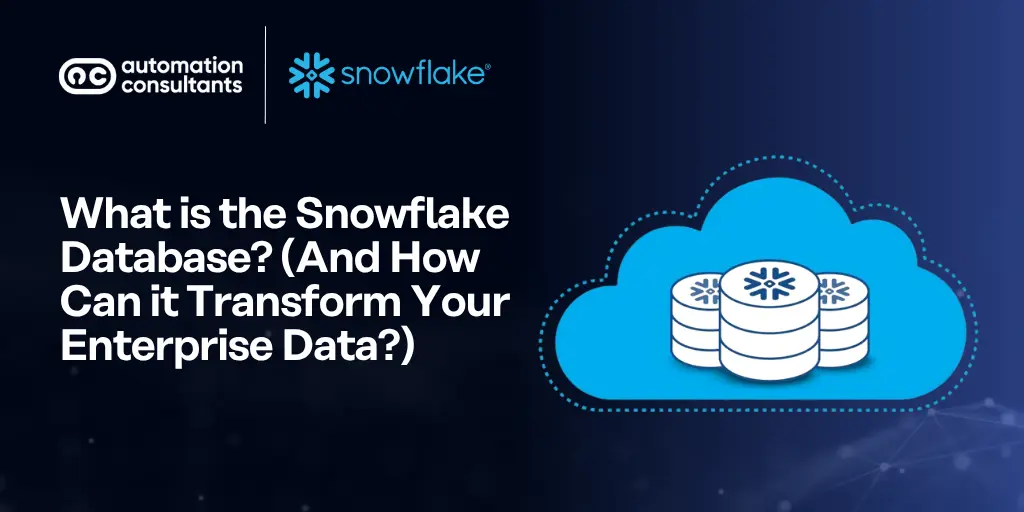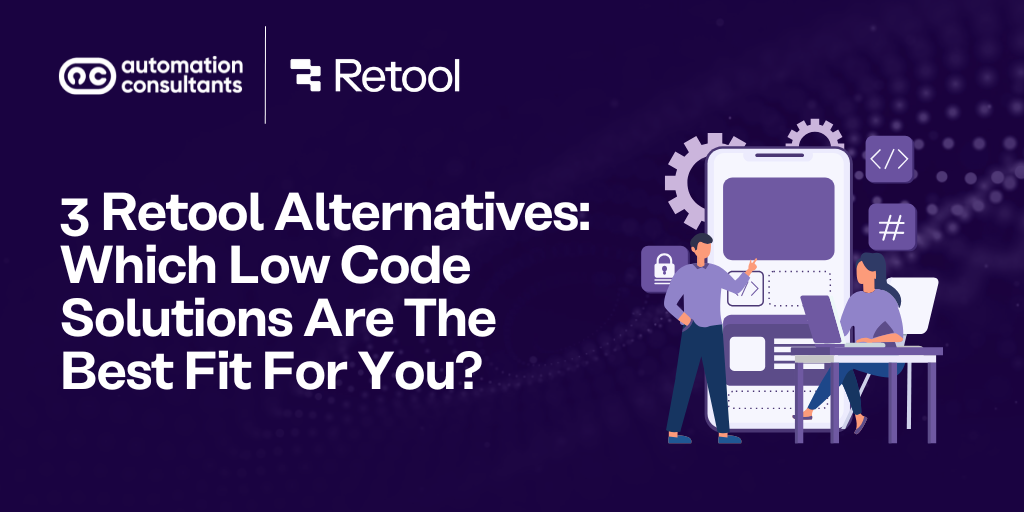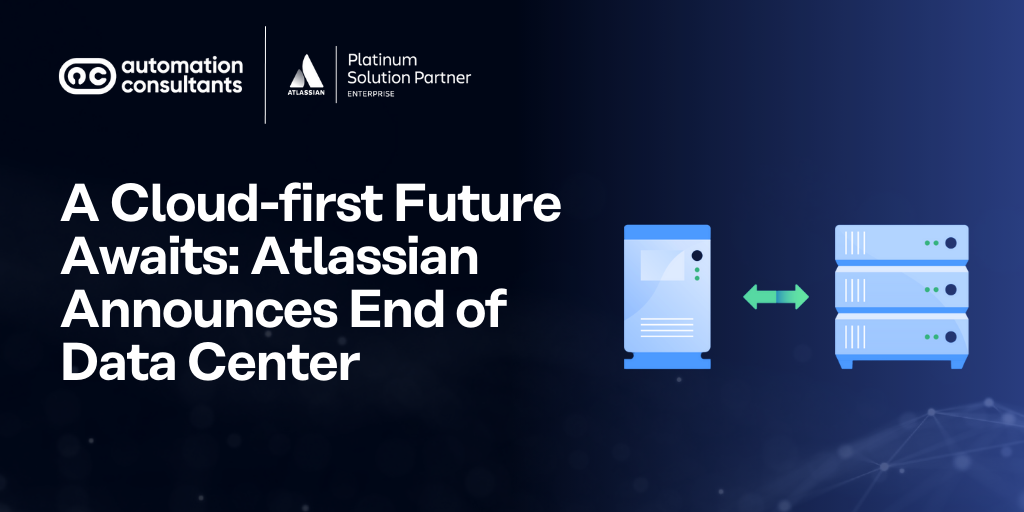According to TechRepublic, 74% of enterprises use Cloud infrastructure or hosting. The number is only going to grow, as evidenced by Atlassian retiring support for server products.
The thing is, you can migrate applications to the Cloud quite easily, but moving traditional data infrastructure can be problematic.
That’s where Snowflake comes in.
So, what exactly is the Snowflake database, and why should it matter to your teams?
With Atlassian phasing out on-prem support, should you keep your Jira instances on your server or migrate to the Cloud?
The Snowflake Scalable Cloud Data Warehouse: An introduction
Snowflake is a Cloud-based data warehousing platform. It’s designed to solve the challenges faced by modern workflows in databases designed for on-premises infrastructure.
There’s nothing wrong with on-prem database setups. However, they are often unsuitable in Cloud-first strategies, particularly if you’re an organisation managing growing volumes of customer data, varied formats, and increasingly complex reporting needs.
If you’re one of them, you’ll find that legacy systems rely on rigid schemas and struggle with diverse data types. They also lack elasticity, or the ability to automatically adjust resources in response to workload changes. Scalability is another issue, as it often requires manual intervention to handle growing demands on data storage and data processing.
Snowflake, by contrast, was built for the Cloud.
This Cloud data warehouse solution allows your organisation to store, analyse and share large volumes of business information across teams, platforms and systems. And because it’s fully managed, there’s no need to maintain infrastructure or handle routine database administration, allowing teams to focus on complex data analysis.
What sets Snowflake apart is its unique architecture, which separates three key components: storage, compute, and services.
This separation allows each element to scale independently. That, in turn, gives you fine-grained control over cost, performance, and resource usage. Snowflake also supports both structured and semi-structured data, such as JSON, making it easy to work with shared information from multiple sources.
Another point in its favour is that it runs on the major Cloud providers: AWS (where it was first launched), Microsoft Azure, and Google Cloud. That makes it a natural fit for any organisation that’s building a data Cloud strategy around these ecosystems.
But that’s just scratching the surface; let’s see what Snowflake can offer your business.
Why enterprises choose Snowflake Database for their Cloud data strategy
We mentioned earlier how the Snowflake Cloud data warehouse is a stronger choice than other, more traditional databases. Here’s why:
Elastic and independent scaling
Snowflake is particularly well-suited for big data environments where storage and processing requirements fluctuate unpredictably. Traditional data warehouses often require businesses to scale compute and storage together. That leads to overprovisioning and unnecessary costs.
Snowflake changes that. As we explained earlier, its architecture separates compute from storage. That means each layer can scale independently and automatically based on actual demand.
For example, say your data science team was running a one-off model training workload. They can temporarily scale up compute without affecting the rest of the system or incurring long-term cost.
Similarly, storage can grow with your data volume. It doesn’t matter whether you’re archiving 10 GB or 10 PB; performance doesn’t slow down, and reconfiguration isn’t required.
Experiencing seasonal surges, such as retail spikes during the holidays or reporting cycles at financial year-end? Snowflake can automatically and temporarily scale up compute resources to maintain performance, without requiring long-term infrastructure commitments.
As a result, you avoid overpaying during quiet periods and still have the capacity to handle large jobs when needed.
Reduced costs and administrative overheads
Consumption-based pricing means you’re only charged for what you use. In traditional setups, compute and storage are inherently linked together. You can’t increase one without also increasing the other. So, whilst you might have only needed extra storage space, you had to increase — and hence, pay for — both.
Snowflake decouples the two, so if you need more storage, you aren’t obligated to buy extra computing power as well.
This cost-saving comes on top of the reduced expenses typically associated with Cloud computing. By which, we mean no more paying for the infrastructure or hardware.
And, finally, it automates several data management tasks, such as index management, partitioning, vacuuming, and query tuning. It frees up your team’s time to focus on more valuable work, and we all know time is money.
Built-in multi-Cloud flexibility
We mentioned it in passing earlier, but one of Snowflake’s biggest advantages is that it’s compatible with all the popular Cloud platforms. In contrast, traditional databases are restricted to your physical infrastructure. Even other Cloud databases are likely to be confined to a single provider.
Due to this feature, you’re not locked to a specific vendor or platform with Snowflake. It’s very useful if you’re adopting a multi- or hybrid-Cloud strategy. You can do so without re-architecting your data environment or trying to maintain multiple toolsets.
Its architecture also supports secure, governed data sharing across regions, departments, or even external partners — all without duplicating data.
Are you a global business frequently expanding into new markets, collaborating with partners, or dealing with mergers and acquisitions? Snowflake will act as a unifying data layer. It makes your data portable and Cloud-neutral. As a result, you can store all business information in one place and connect it to the platform of your choice at any point in time.
Modern, enterprise-scale data workload handling
Snowflake supports a wide range of enterprise data use cases on a single, unified platform. In contrast, traditional, on-prem systems are often only optimised for one type of workload. Even Cloud solutions usually focus on storage and analytics.
So, what can it support?
- Business intelligence and reporting, through integration with tools like Power BI, Tableau, and Looker
- Machine learning and data science, by supporting Python, Apache Spark, and external modelling frameworks
- Robust data engineering, including modern ELT/ETL workflows and pipeline orchestration
- Real-time ingestion and modern data pipelines, through native support for streaming and micro-batch processing
What makes it even more powerful is the fact that it can support both structured and semi-structured data. Formats like JSON, Avro, and Parquet don’t require complex preprocessing or schema redesign. You don’t need separate tools or layers to manage them, so there’s no duplication of data. It also means your workflows are less complex, which speeds up insight delivery.
Snowflake supports a VARIANT data type, which allows you to store and query semi-structured data, such as JSON, Avro, or XML, within a single column, without needing to predefine a fixed schema. This adds a layer of flexibility for handling diverse and evolving data sources.
Designed for security and compliance
In on-premises environments, maintaining data security and compliance often involves a combination of third-party tools, manual audits, and ongoing oversight. Even many Cloud data platforms leave it up to IT teams to stitch together access controls, encryption, and policy enforcement across services.
Snowflake, on the other hand, builds security and compliance into the platform itself.
It offers end-to-end encryption by default, and fine-grained access controls that allow you to define custom roles and permissions at the level of the database, data set or even column. Only authorised users can view sensitive information, which can be critical in sectors, such as finance, healthcare, and government.
Snowflake also includes native support for key regulatory frameworks, like GDPR, HIPAA, and SOC 2. As a result, you can meet data protection requirements without extensive configuration or third-party compliance tooling.
In contrast to traditional systems, Snowflake provides features like time travel and fail-safe. These allow administrators to recover data from accidental deletions or unauthorised changes, reducing operational risk and reinforcing auditability.
The Snowflake architecture: How it works and what makes it different
What makes Snowflake so effective — and so different from traditional databases — is its underlying architecture. It was designed specifically for the Cloud. As such, it’s made of a structure that separates the three core components:
- Compute: The processing power required to run queries and perform data analytics
- Storage: The central, scalable location where data is held
- Services: The layer responsible for metadata, security, and system orchestration
In Snowflake, data is stored centrally in highly scalable Cloud object storage. This storage layer is elastic, so it automatically grows with your data.
Compute is the processing power used to run queries or transform data. It’s handled by what Snowflake calls virtual warehouses. These are independent, temporary clusters that can be spun up or down as needed.
Virtual warehouses enable different teams or workloads to run at the same time without affecting each other. If your organisation works in an environment with variable or concurrent usage, this ensures high performance and cost efficiency.
Finally, Snowflake’s services layer handles critical functions like authentication, metadata management, and query optimisation. Because this layer is also Cloud-native, it scales with demand and integrates easily with third-party Cloud services to support data governance and access control.
The result is a platform that offers the simplicity of shared-disk systems (everything in one place) and the performance of shared-nothing systems (independent, parallel processing), without the downsides of either.
Not sure which Snowflake is suitable for you? Read about data warehouse vs data lake vs data lakehouse here.
How Snowflake fits into an AWS-centric environment
If your organisation is already running workloads in AWS, Snowflake works as a natural extension to your Cloud strategy. Although AWS provides its own data warehousing solution through Amazon Redshift, in our experience, many enterprises prefer Snowflake. It’s simpler, more elastic, and more Agile over the long term.
Redshift typically requires manual cluster sizing, tuning, and infrastructure management. Meanwhile, Snowflake is a fully managed, serverless platform. Compute power is provisioned on demand and scales automatically, so there’s no need to configure or optimise clusters manually. This makes Snowflake especially appealing for teams that want fast time to value without the overhead of infrastructure administration.
Snowflake also integrates smoothly with the wider AWS ecosystem. It can:
- Ingest data directly from Amazon S3 using Snowpipe, Snowflake’s automated data loading service
- Work with AWS Lambda, Glue, and Step Functions to support serverless pipeline automation
- Serve as a backend for analytics tools like Amazon QuickSight, as well as common third-party BI platforms
- Support machine learning workflows through AWS SageMaker or custom Python/Spark-based models
If your organisation is security-conscious, you will also appreciate Snowflake’s compatibility with AWS PrivateLink. It enables private network communication between Snowflake and your AWS VPC whilst reducing exposure to the public internet.
From a strategic perspective, Snowflake’s centralised data layer supports diverse teams — from engineering and data science to finance and operations — while integrating cleanly with the services you already use in AWS.
How Snowflake aligns with an Atlassian-centric environment
Atlassian apps, such as Jira, Confluence, and Bitbucket, are essential to many organisations’ workflows for development, project management, and collaboration. But while these platforms are excellent for day-to-day operations, they don’t always provide a clear, consolidated view of performance, progress, or value at an enterprise scale.
That’s where Snowflake comes in.
By integrating data from Atlassian tools into Snowflake, organisations can build a centralised reporting layer that offers deep, cross-functional visibility. Snowflake lets you store and analyse metrics, like sprint velocity, issue resolution times, team capacity, and deployment frequency, alongside operational and financial data in one location.
Snowflake can connect to Jira’s REST APIs or Atlassian Data Lake to ingest structured project data. Combined with inputs from AWS, CRM tools, finance systems, or external datasets, Snowflake enables seamless data integration across the business. For example:
- Product managers can track feature delivery across Jira and customer usage data.
- Finance can align engineering efforts with cost reporting.
- Executives can view project progress in the context of revenue goals.
As you already know, Snowflake supports both structured and semi-structured data. It can handle the variety of formats produced by Atlassian tools, including nested JSON from API exports, without the need for transformation or schema design.
Ultimately, Snowflake transforms Atlassian data from isolated logs and tickets into strategic insights. With the right consultancy support, teams can design automated pipelines, build custom dashboards, and make data from Jira, JSM and Confluence part of a wider enterprise intelligence ecosystem — all while ensuring governance, scalability, and performance.
Should you deploy your Atlassian tools on your server or in the Cloud? We try to answer this question in a fair and balanced manner in our Atlassian Cloud vs Server comparison.
Need a hand with your Snowflake implementation?
As an IT leader, you may be under pressure to modernise data infrastructure as Cloud adoption accelerates. Snowflake is a platform that combines scalability, simplicity, and security, contained within a Cloud-native architecture. It provides the flexibility to adapt and the performance to scale.
Of course, it takes more than just enabling the platform to make the most of what Snowflake offers. You need a well-planned approach to integration, governance, and workload optimisation — especially if your environment is large or complex.
Do you need support with embedding Snowflake into your data strategy?
Want to talk more about Snowlfake?
Book a free 30-min consultation to see how we can help you modernise your data stack, optimise performance, and drive real business value with Snowflake.





